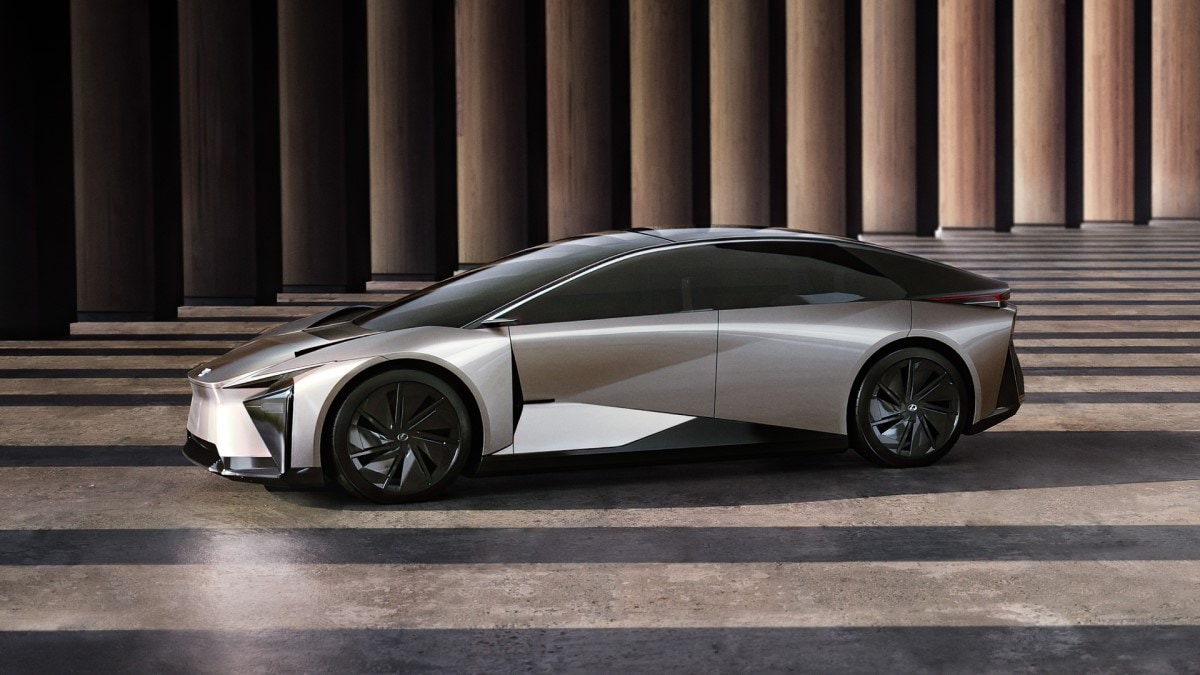Lexus has promised to sell a 100% electric lineup by 2035. But it has a long way to go to get there. The brand has just one electric vehicle (EV) in American dealerships, the slow-selling RZ SUV.
But it plans to speed up.
Toyota’s luxury brand used the Japan Mobility Show (formerly the Tokyo Motor Show) this week to show off a pair of EVs. One is just a sketch of a theoretical future. The other, Lexus says, will be in showrooms by 2026.
Headed for Production: the LF-ZC
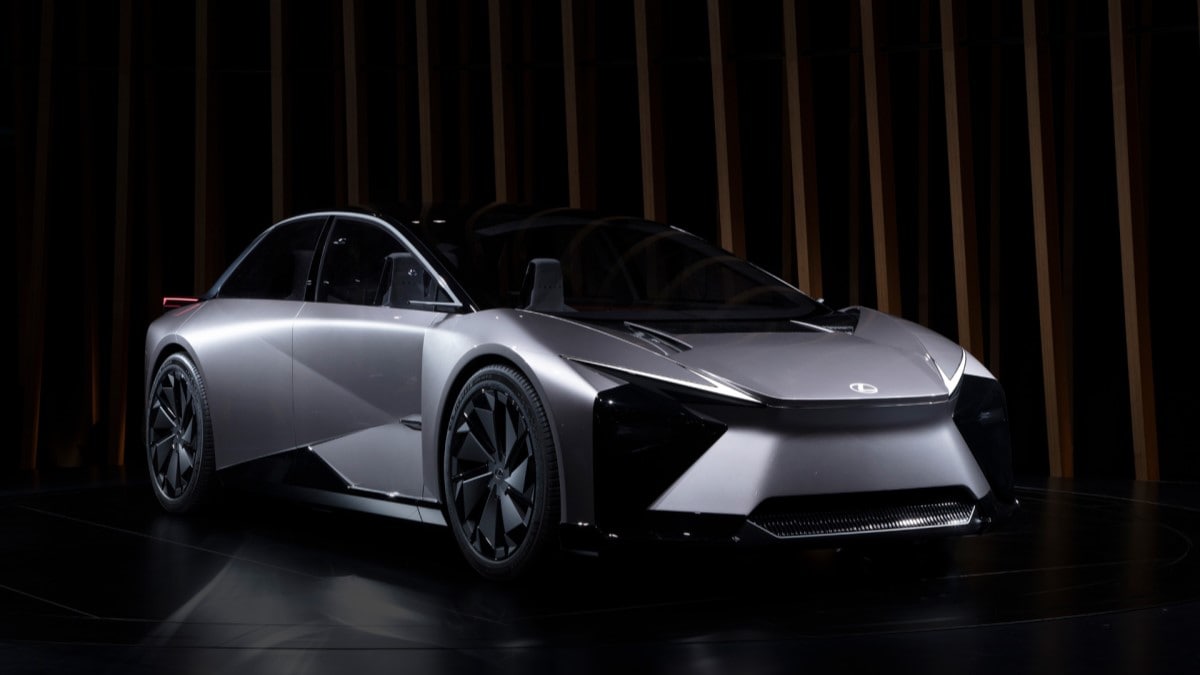
The LF-ZC looks like the kind of offbeat vehicle car designers create as a concept car — something meant to tease future designs but never to be built in its current form. But Lexus says the model is “scheduled for launch in 2026.”
Concept cars are sometimes toned down for launch. So, the riot of angles you see here might be simplified for the factory line. But Lexus seems committed to making it stand out, calling it “an emotionally charged design that seamlessly blends functionality and aesthetics.”
Busy, Angular Design, Sweeping Panoramic Roof
The LF-ZC sits low enough to the ground to be characterized as more car than SUV, but its long, arching roofline creates more of a liftgate than a trunk. It arguably draws inspiration from Toyota’s Prius lineup, blended with a healthy dose of futurism.
The most dramatic design element might be more noticeable from the inside. The windshield is essentially one piece of glass from the dashboard to well behind the rear passengers. The view and the replacement costs will doubtless be incredible.
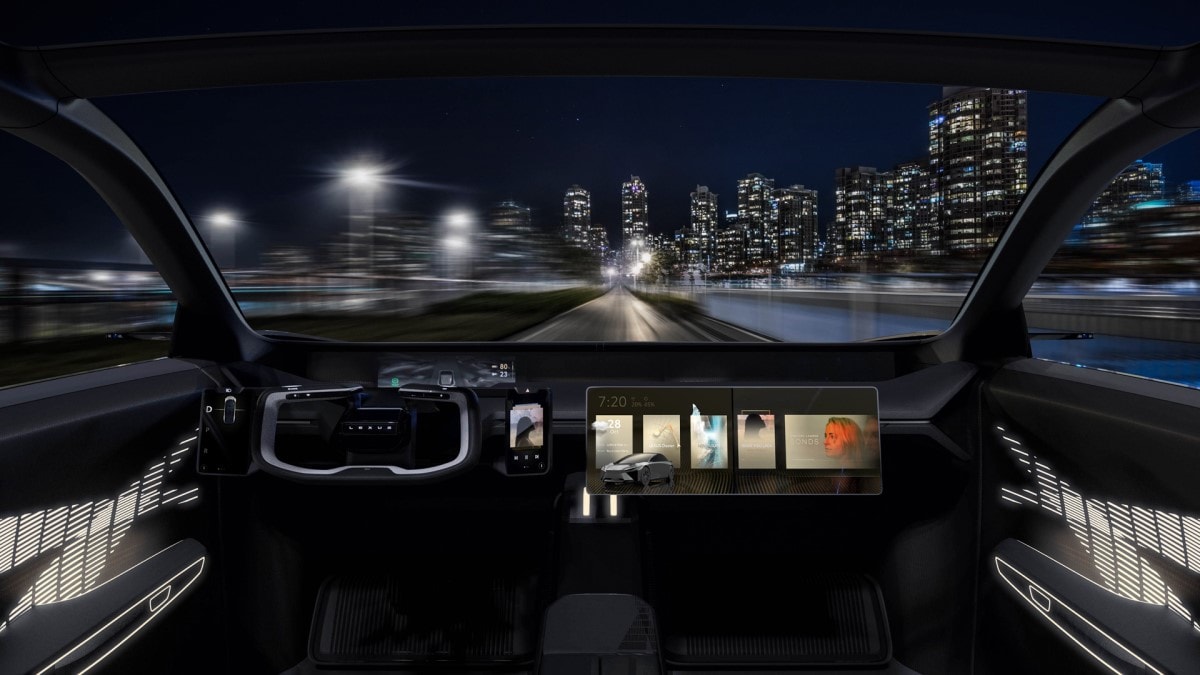
The driver gets a slim yoke instead of a steering wheel. A pair of what Lexus calls “digital pads” handles most settings. “The controls for vehicle functions like shifting, ADAS, and drive mode selection are all located within the left digital pad. Convenience features such as music, climate control, phone, and AI functions have been grouped within the right digital pad,” the company says.
But you might not need to touch them. A virtual assistant Lexus calls “Butler” uses AI to learn and accommodate your preferences. Lexus says, “It also identifies preferences that customers may not be aware of, offering new experiential value.” Which is not creepy at all.
Next-Generation Batteries for Longer Range
Lexus is cagey about mechanicals, possibly because the LF-ZC is meant to introduce next-generation battery technology. “By using next-generation prismatic high-performance batteries, LF-ZC aims to achieve approximately twice the range” of today’s EVs, the company says.
Power goes to all four wheels, a system Lexus calls DIRECT4. Lexus also brags about “the natural, linear steering feel provided by Steer-by-Wire.” We’ve used the steer-by-wire system in the RZ, and it felt effortless. We also appreciated the variable ratio that keeps the driver from making hand-over-hand turns, but we wouldn’t describe it as natural. But perhaps it will grow more natural by 2026.
The company doesn’t go into deep detail on the car’s automation features but notes once partially assembled, it will “drive itself” through the factory, eliminating the need for a conveyor belt. Cute.
It amounts to a lot of dramatic claims about an unusual-looking vehicle, but we expect Lexus to have it toned down by the time it reaches production. Price is a total mystery this early.
Just an Idea: The LF-ZL
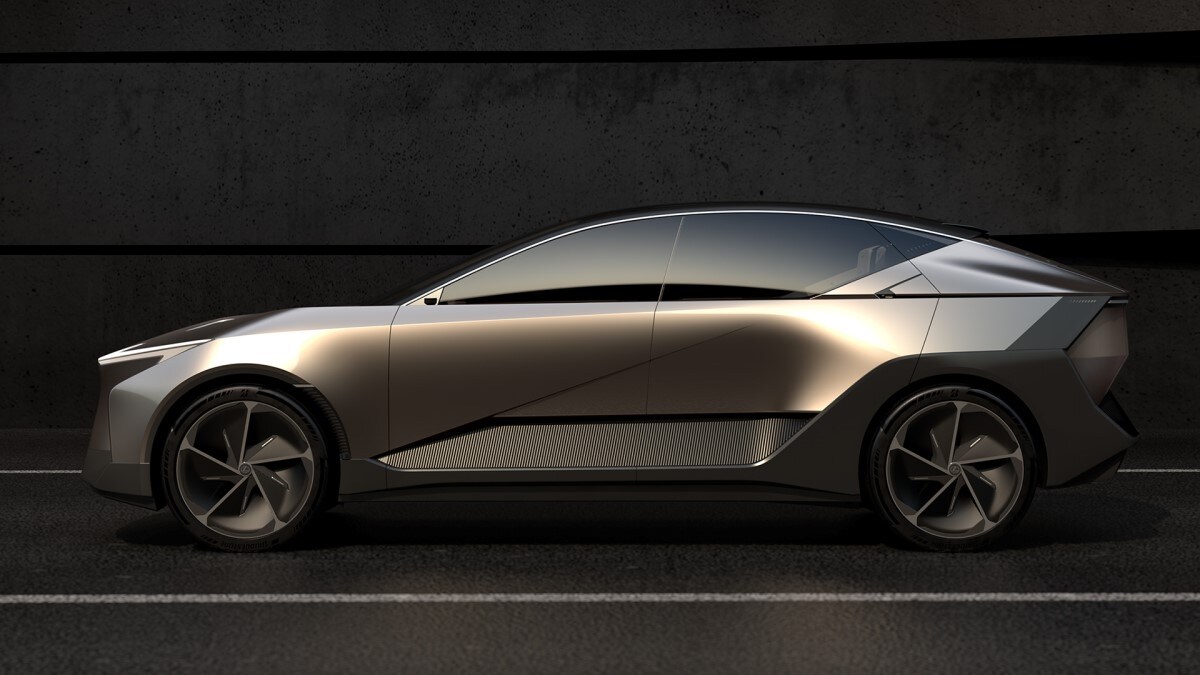
Just as Lexus is open about the LF-ZC heading for production, the company admits the LF-ZL is not. It is, instead, meant to show what a flagship model might look like in the future.
That’s a bit strange because the exterior of the LF-ZL looks more production-ready than the many-faceted body of the LF-ZC. It shares an obvious kinship with today’s RX line.
Inside, thin, geometric seats contribute an airy feel. The rear seats — built as two bucket seats rather than a 3-person bench — have integrated leg rests and a small divider between them.
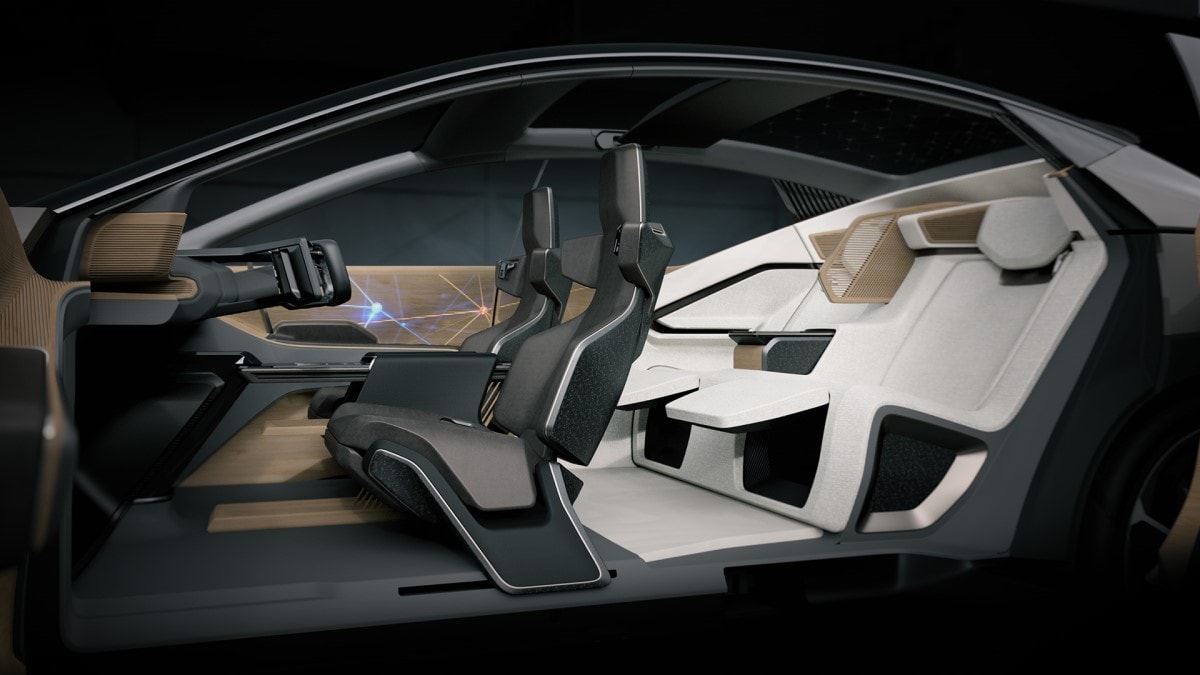
The Butler AI system may have advanced considerably by the time the ideas found in the LF-ZL reach production. Lexus explains, “Through ‘Interactive Reality in Motion,’ the car’s onboard sensors work in conjunction with digital data from the surroundings. When drivers point to objects or places of interest during their journey, the car’s display promptly delivers information along with voice guidance.”
Considering that one, we imagine the number of toddlers riding in Lexus flagships is mercifully small.
“Big data,” Lexus says, “allows management of the charging process and power supply, enabling the vehicle to seamlessly connect to the network and become an integral part of the societal infrastructure while parked.” That suggests vehicle-to-grid technology — the sort of thing that allows a car’s battery to become part of the local energy storage grid.
